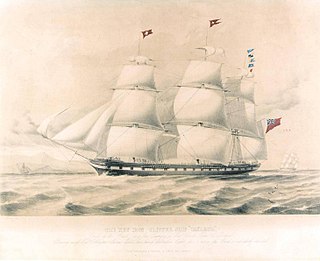
RMS Tayleur was a full-rigged iron clipper ship chartered by the White Star Line. She was large, fast and technically advanced. She ran aground off Lambay Island and sank, on her maiden voyage, in 1854. Of more than 650 aboard, only 280 survived. She has been described as "the first Titanic".

The Manacles are a set of treacherous rocks off The Lizard peninsula in Cornwall. The rocks are rich in marine wildlife and they are a popular spot for diving due to the many shipwrecks. Traditionally pronounced mean-a'klz (1808), the name derives from the Cornish meyn eglos, the top of St Keverne church spire being visible from the area.

The SS City of Rio de Janeiro was an iron-hulled steam-powered passenger ship, launched in 1878, which sailed between San Francisco and various Asian Pacific ports. On 22 February 1901, the vessel sank after striking a submerged reef at the entry to San Francisco Bay while inward bound from Hong Kong. Of the approximately 220 passengers and crew on board, fewer than 85 people survived the sinking, while 135 others were killed in the catastrophe. The wreck lies in 287 feet (87 m) of water just off the Golden Gate and is listed in the National Register of Historic Places as nationally significant.
Royal Captain was a British East Indiaman launched in 1772 and lost in 1773 in the South China Sea. In 1999, an expedition discovered the wreck and salvaged some of her cargo.
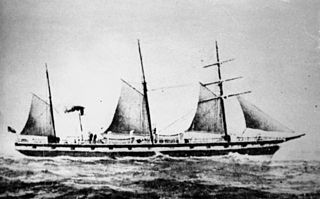
SS Gothenburg was an iron-hulled sail- and steamship that was built in England in 1854 and sailed between England and Sweden until 1862. She then moved to Australia, where she operated across the Tasman Sea to and from New Zealand until 1873, when she was rebuilt. After her rebuild, she operated in the Australian coastal trade.

The Salem Express was a passenger ship that sank in the Red Sea. It is notable due to the heavy loss of life which occurred when she sank shortly after striking a reef at around 11:13pm on Saturday December 14, 1991.
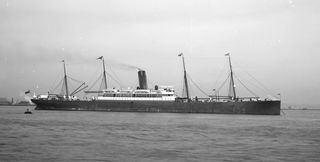
The SS Mohegan was a steamer which sank off the coast of the Lizard Peninsula, Cornwall, on her second voyage. She hit The Manacles on 14 October 1898 with the loss of 106 out of 197 on board.

The Fitzroy was a steel-hulled steamship built in 1912 at Old Kilpatrick, Scotland in 1912. Thirty-one people were killed when Fitzroy capsized in a gale whilst carrying a general cargo between Coffs Harbour and Sydney off Cape Hawke, New South Wales on 26 June 1921.
Many ships have wrecked in and around San Francisco Bay. For centuries San Francisco Bay, with its strong currents, rocky reefs, and low fog conditions has experienced more than a hundred shipwrecks. Ever since San Francisco Bay was discovered during the land expedition of Gaspar de Portolà in 1769, it has been one of the most popular harbors.
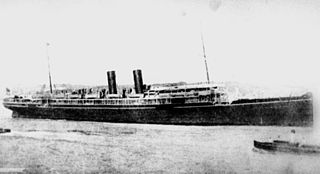
SS Egypt was a P&O ocean liner. She sank after a collision with Seine on 20 May 1922 in the Celtic Sea. 252 people were rescued from the 338 passengers and crew aboard at the time. A subsequent salvage operation recovered most of the cargo of gold and silver.

SS Oceana was a P&O passenger liner and cargo vessel, launched in 1887 by Harland and Wolff of Belfast and completed in 1888. Originally assigned to carry passengers and mail between London and Australia, she was later assigned to routes between London and British India. On 16 March 1912 the ship collided in the Strait of Dover with the Pisagua, a 2,850 GRT German-registered four-masted steel-hulled barque. As a result Oceana sank off Beachy Head on the East Sussex coast, with the loss of 17 lives.

SS Arratoon Apcar was an iron-hulled sail and steam merchant ship that was built in Scotland in 1861 and wrecked off the coast of Florida in 1878. Her wreck in shallow water on Fowey Rocks is now a scuba diving site.
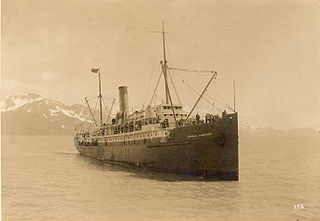
The SS Admiral Sampson was a U.S.-flagged cargo and passenger steamship that served three owners between 1898 and 1914, when it was rammed by a Canadian passenger liner and sank in Puget Sound. Following its sinking off Point No Point, the Admiral Sampson has become a notable scuba diving destination for advanced recreational divers certified to use rebreathing equipment.

SS Moresby was a British Cargo ship that was torpedoed by the German submarine SM U-39 in the Mediterranean Sea, 120 nautical miles (220 km) Northwest of Alexandria, Egypt on 28 November 1916 while she was travelling from Saigon, Vietnam to Dunkirk, France carrying a cargo of rice.











